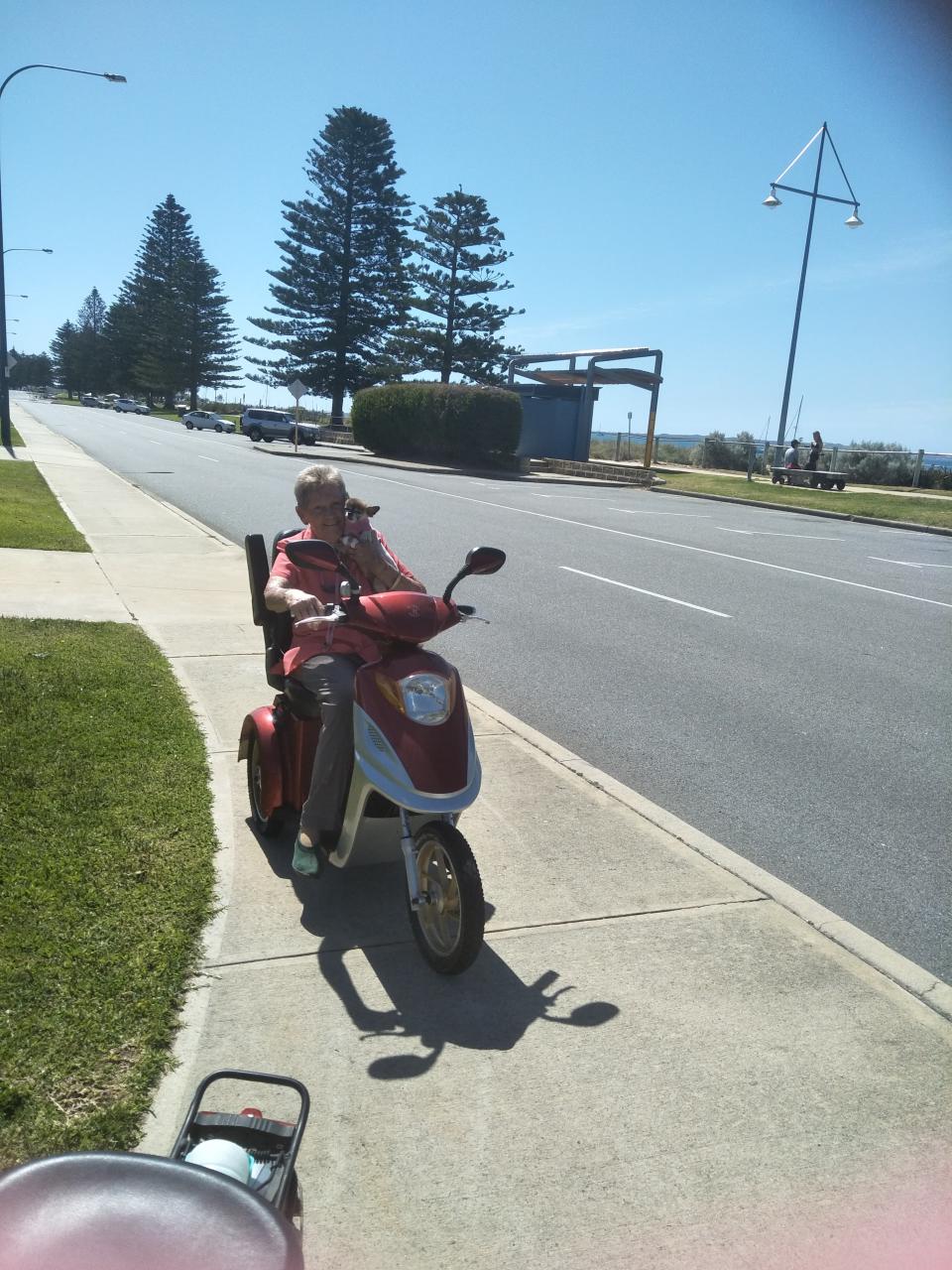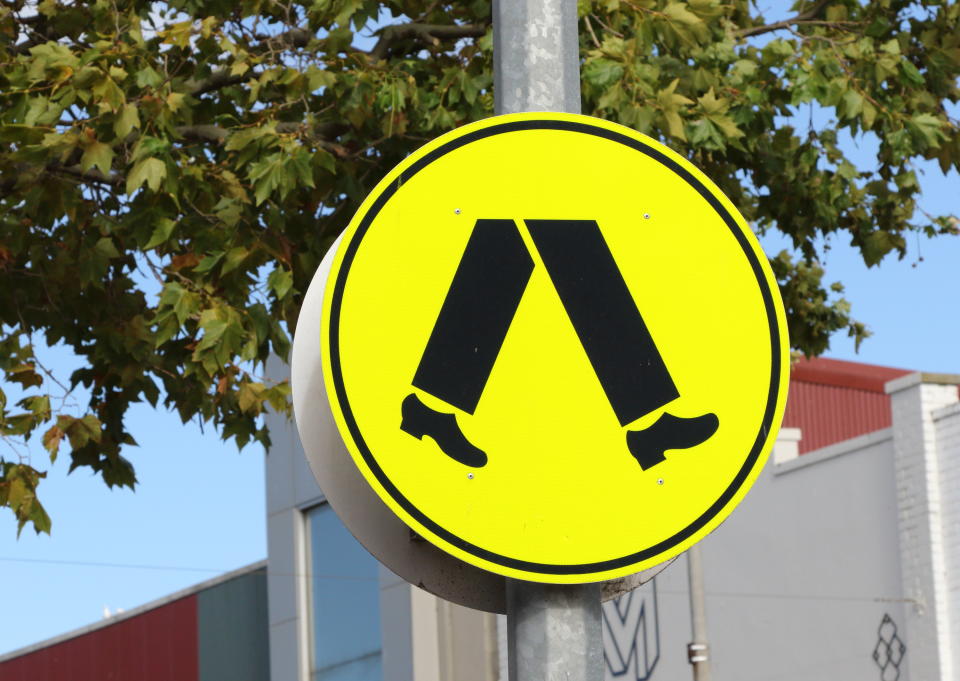The poorly known road rules users of mobility scooters have to follow
Mobility scooters that zip around shopping centres, dart across pedestrian crossings and zoom past walkers on footpaths might leave people wondering what rules their users are bound by - if any.
There is actually an extensive list of regulations applying to mobility scooters that ban users from engaging in behaviour potentially harmful for themselves and other road and path users.
Each state has their own rules, but there are rules which are common to all including that devices must not be capable of travelling faster than 10km/h, nor should they have a net weight higher than 110kg.
Who is allowed to use a mobility scooter?
Mobility devices should only be used by people who have a disability or experience difficulty walking.
Australian Road Rules state the driver must have a reasonable need to use the device and must be capable to do so.
Generally, they are designed to transport people who are unable to walk, or who have difficulty walking.

Do users need a licence?
No licence is needed to drive a mobility scooter in any state or territory, but users in Queensland do need to register their device with the Department of Transport and Main Roads.
If they have a higher net weight than 110kg and can travel faster than 10km/h however, they become legally considered vehicles and therefore must comply with regulations and rules set for vehicles.
The device must also be designed and built for a seated person with mobility difficulties and can not be propelled by a combustion engine.
People that use mobility scooters do not need a driver’s licence to operate one and don’t need to pay compulsory Motor Injury Insurance.
Is a user a pedestrian or a driver?
People using mobility devices are classified as pedestrians and must follow the same road rules as other pedestrians.
A motorised wheelchair user is generally considered to be a pedestrian, and therefore must comply with road rules that apply to pedestrians.
Laws across all states and territories say mobility scooters used by people with a mobility impairment can go anywhere a pedestrian can go including footpaths, shopping centres and nature strips.
Generally, mobility scooters should not be driven on the road if there is a footpath or nature strip available.

What are the rules for mobility scooter users?
Mobility scooters are not allowed to exceed 10km/h on level ground, nor are they allowed to be capable of doing so.
Just like getting behind the wheel of a car, it is illegal to ride the device when under the influence of drugs or alcohol.
Users must also have a reasonable need to use a wheelchair because of a physical disability or because they have limited mobility, and should always obey pedestrian road rules.
It’s an offence for a user to cause a traffic hazard by moving into the path of a driver, and unreasonably obstructing the path of another driver or pedestrian.
Users must always cross a road using the shortest direct route, and only cross at a pedestrian crossings when the light is green.
They must also avoid crossing roads near roundabouts, and in the event they need to use a roundabout, they should leave the kerb when there is no traffic.
Mobility scooters are required to give way to all motor vehicles in or entering a roundabout and avoid crossing intersections with no lights or signs.
Users should always drive on a footpath or nature strip if there is one available and safe to use, and when using a separate footpath use either the pedestrian lane as priority, and if it’s not available, use the bicycle lane.
If the bicycle path has to be used, users should always let bicycles pass before crossing a path and not travel past a sign banning pedestrians.
A mobility scooter can only be used on the road if there is no footpath, pathway or nature strip available, and only where pedestrians are allowed to walk.
The user must always give way to other road users on the path, including animals.
Can you travel with a scooter in a taxi?
When travelling in a wheelchair accessible taxi, mobility scooter users should never sit on the device while the vehicle is moving.
The user needs to shift themselves into a regular passenger seat and put their seatbelt on, but not before ensuring the device is safely restrained in the vehicle using four anchor points.
The mobility scooter should also fit within the allocated floor space in the vehicle, which needs to be 1300cm long, 1500cm high and 800cm wide.
Are mobility scooters safe?
Several safety issues have been raised in a report calling on more regulations for mobility scooters, which don’t require registration unless being used in Queensland.
In the 2018 report, Need for Regulation of Mobility Scooters, one case detailed how a man was rammed in the legs on two separate occasions while walking along a footpath - one incident causing him to suffer a broken ankle.
In another instance, a woman was struck behind in a similar way by a mobility scooter on a footpath and fortunately landed softly on the grass, but her husband feared it could have been fatal if she landed on the concrete.
In a third incident, a woman required surgery on her leg after being hit by a device being used inside a shopping centre.
The woman’s son claimed she had been permanently damaged physically and mentally, and had also been left with no option but to sell her home.

The ACCC said dangers sometimes arose when the rider did not have enough hand strength and movement to use the controls, and steer the scooter.
Also when users did not have the ability to turn their head to look to the side and behind, enough balance when riding on bumpy or rough ground, or the ability to sit for periods of time.
Sometimes not being able to change the position of their body when going up and down inclines was a risk factor, also not being able to see or hear vehicles and pedestrians approaching, or the ability to correctly judge distances.
Users with a hindered ability to concentrate for extended periods, and who have difficulty reacting quickly or exercising patience in crowded areas, such as shopping centres, were also identified as problematic.
Injuries and deaths caused by mobility scooters
An 83-year-old man died in December after his his mobility scooter was hit by a car at a pedestrian crossing in Kalgoorlie, in Western Australia’s Goldfields region.
An Australian Institute of Health and Welfare report published last year revealed 97 per cent of injuries caused by mobility scooters were fall-related, and the rest were pedestrians injured in a collision with a mobility scooter.
There were 4,613 people admitted to hospital for a possible mobility scooter-related injury from 2011–12 to 2015–2016, and 69 people aged 60 and over died from a mobility scooter-related incident in the 10 years 2006–07 to 2015–16.
The report also found mobility scooter-related deaths were most likely to occur when the person was crossing the road.
Do you have a story tip? Email: newsroomau@yahoonews.com.
You can also follow us on Facebook, Instagram and Twitter and download the Yahoo News app from the App Store or Google Play.


